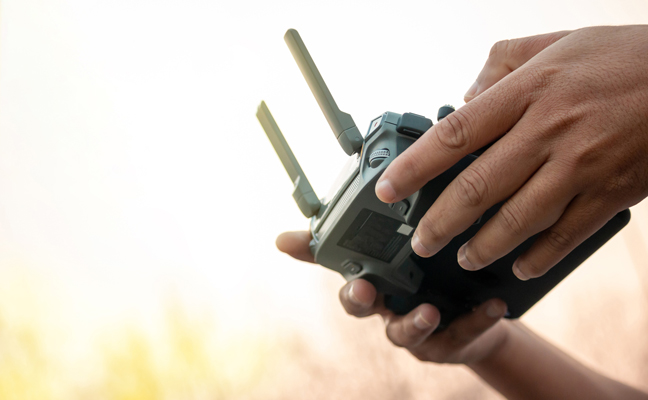
PHOTO: BNMK0819/ISTOCK / GETTY IMAGES PLUS/GETTY IMAGES
Over the past seven decades, the use of aerial pest management has increased. In the 1950s, the U.S. government used airplanes to drop tens of millions of sterile New World screwworm flies (Cochliomyia hominivorax) in an attempt to eliminate the pest where populations were killing cattle.
They focused first on Sanibel Island, Fla., then the state of Florida, and eventually the Texas-Mexico border. The sterile male screwworm population overwhelmed the target areas, and stopped successful mating.
In the 1980s, meatballs containing a rabies vaccine were aerially dropped in areas where raccoon populations were known to have a high incidence of rabies. This way, the rabid raccoon population was vaccinated successfully.
In 2013, brown tree snakes were devastating native animals in Guam. Two thousand dead mice were injected with acetaminophen, the active ingredient in Tylenol, and parachuted down to the ground over Andersen Air Force Base. It was the fourth and biggest rodent air assault. It worked and helped save exotic native birds, because the drug has a lethal effect on the snakes. (Editor’s Note: For more on the project, read more at “Tylenol: The headache and snake medicine?“)
In Africa, locust swarms are many miles wide and long. Going back to the early days of propeller planes, locusts were controlled by flying into the huge swarms and treating with dichlorodiphenyltrichloroethane (DDT). Even in 2020, this technique is still used — although the pesticide is different.
THE RISE OF DRONE TECHNOLOGY
Pest Management Professional covered the use of drones in-depth in its May 2018 cover story, but drone applications in pest management are on the rise. Drones equipped with sensitive cameras can view the status of flat roofs, open fields and golf courses to inspect and record what, if any pest management techniques are needed. They can carry aerosol up to a hornet nest, keeping the tech and the customer out of harm’s way.
Imagine a drone equipped with an infrared camera scanning a crop field to determine whether mice are present. If so, some of the mice can be captured and a DNA sample taken to determine whether this is the species of mice that was found inside a food plant, where the processed crop was contaminated with mouse hairs. (No need to imagine this scenario because it did happen.)
Drones are even used to drop mosquito traps into hard-to-reach areas, in an attempt to catch potential Zika virus-carrying mosquitoes. The traps contain cameras that record and transmit back which species of mosquitoes are caught.
A MACRO VIEW
Now let’s step way out into space and picture GPS satellite photography, where Formosan termites (Coptotermes formosanus) swarm over New Orleans, La. It can actually record this event when many different swarms occur at the same time.
Maybe you would like to see whether the mounds of red imported fire ants (Solenopsis invicta) are prevalent in grass fields scheduled for cattle grazing. This also can be accomplished with GPS satellite photography.
When we say “the sky is the limit,” it is beyond that now. I can already picture tiny drones inspecting wall voids in a structure, and transmitting the data back to your smartphone. These could be the drones you’re looking for.
Pest warfare, from the air
On a more sinister note, aerial bioterrorism existed before aircraft was even a thought. Flea-infested rats were catapulted into castles in an attempt to wipe out inhabitants with plague. This way, the catapultiers could destroy the enemy without hand-to-hand combat.
During World War ll, a Japanese military unit dropped over China clay “Uji” bombs containing live fleas (Pulex irritans, known as the human flea) infested with a plague organism. Dropping from a height of about 600 to 900 feet, the fleas emerged as the bombs hit the ground. Each bomb housed about 30,000 fleas. Many people died as a result, and plague persisted in the area for many years afterward.
A great book that details how insects were used as weapons of war throughout history is titled Six-Legged Soldiers, by Jeffrey A. Lockwood.
Contact Dr. Frishman, a PMP Hall of Famer (Class of 2002), at PMPEditor@northcoastmedia.net.
Leave A Comment